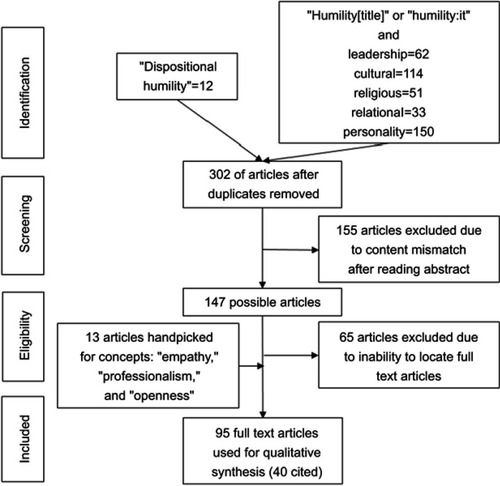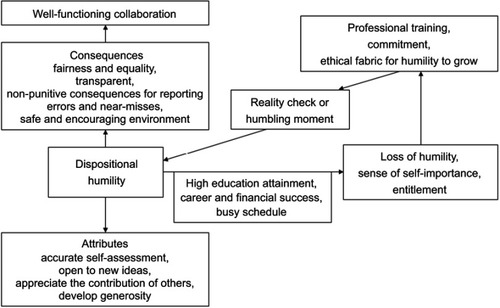Figures & data
Figure 1 Articles published in 1997–2017. The flow chart based on the PRISMA guidelineCitation53 indicates the initial database selection that excluded dissertations and books and included reviews and letters to the editor. When similar or duplicated themes were identified, earlier publications were selected. Articles with topics of empathy and openness emerged while reviewing humility articles. Articles on professionalism were also handpicked in order to create the concept map ().

Figure 2 Concept map of dispositional humility. Dispositional humility allows clinicians to have an accurate self-assessment, be open to new ideas, appreciate the contribution of others, and develop generosity. Dispositional humility in leaders can facilitate character development of team members and create an environment characterized by fairness and equality, transparency, non-punitive consequences for reporting errors and near-misses, and a safe and encouraging environment for performing work. However, dispositional humility must be nurtured and developed through professional training because high educational attainment, career and financial success, and busy schedules may lead to a sense of self-importance and entitlement that can promote separation of team members into hierarchies based on professional disciplines and specialties.
Note: This is not structural equation modeling, and the pathways were not statistically analyzed.

